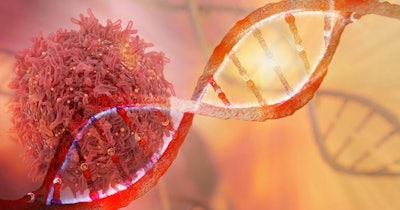
Scientists say they have developed a method to screen cancer-associated genetic mutations more easily and quickly than any existing approach.
Using a variant of CRISPR genome-editing known as prime editing, they hope to identify mutations that could be targeted with new cancer therapies. Researchers from the Massachusetts Institute of Technology (MIT) outlined the method in Nature Biotechnology.
The authors of the paper include Francisco Sanchez-Rivera, an MIT assistant professor of biology, and David Liu, a professor in Harvard University’s Department of Chemistry and Chemical Biology and a core institute member of the Broad Institute.
Tumors can carry mutations in hundreds of different genes, and each of those genes may be mutated in different ways: some mutations simply replace one DNA nucleotide with another, while others insert or delete larger sections of DNA.
Until now, there has been no quick and easy way to screen each of those mutations in their natural setting to see what role they may play in the development, progression, and treatment response of a tumor.
In prime editing, which Liu developed, any kind of point mutation can be introduced, as well as insertions and deletions. However, previous approaches to install and evaluate genetic variants have been limited by the variable efficiency of prime editing guide RNAs (pegRNAs).
In the latest MIT study, the researchers demonstrated their technique by screening cells with more than 1,000 different mutations of the tumor suppressor gene p53, all of which have been seen in cancer patients. This method, which edits the genome rather than introducing an artificial version of the mutant gene, revealed that some p53 mutations are more harmful than previously thought.
The prime editing guide RNAs (pegRNAs) used to direct CRISPR enzymes to cut the genome in certain spots have varying levels of efficiency, which leads to “noise” in the data from pegRNAs that simply aren’t generating the correct target mutation, according to an MIT News report. The researchers devised a way to reduce that noise by using synthetic target sites to help them calculate how efficiently each guide RNA that they tested was working.
It is thought the technique could also be applied to many other cancer genes and could eventually be used for precision medicine, to determine how an individual patient’s tumor will respond to a particular treatment.
“In one experiment, you can generate thousands of genotypes that are seen in cancer patients, and immediately test whether one or more of those genotypes are sensitive or resistant to any type of therapy that you’re interested in using,” Sanchez-Rivera, who is also a member of the Koch Institute for Integrative Cancer Research, told MIT News.
There are few drugs that target p53, but the researchers now plan to investigate mutations found in other cancer-linked genes, for potential discovery of mutation-targeting therapies and possible personalized approaches to treating tumors.
Lead author Samuel Gould said, “This is a case where you could only observe these variant-induced phenotypes if you're engineering the variants in their natural context and not with these more artificial systems. This is just one example, but it speaks to a broader principle that we’re going to be able to access novel biology using these new genome-editing technologies.”



















